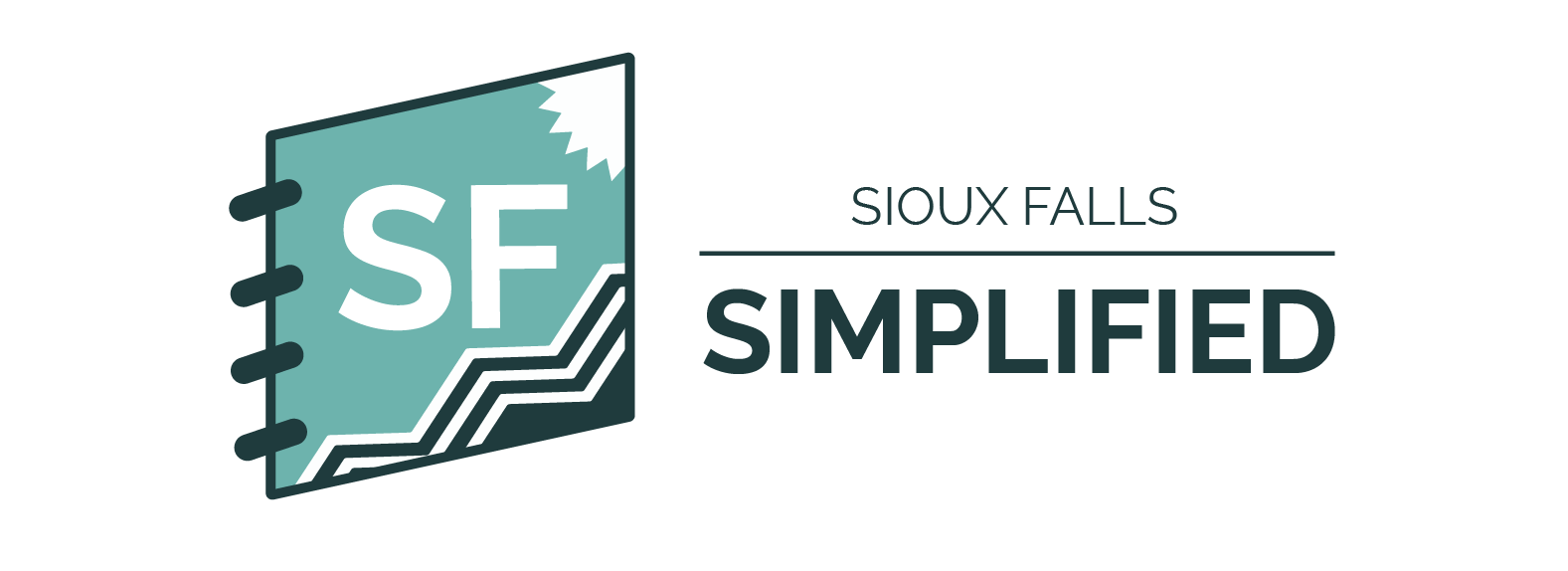Simplified: Lions, sharks and butterflies, oh my! The Great Plains Zoo shared a first look at its long-term master plan this week, and it includes some major changes aimed at bringing a better experience to animals and guests alike.
Why it matters
- Last year, the Great Plains Zoo officially merged with the Butterfly House and Aquarium. Soon after, leaders of the now-combined organizations set out to plan what the next 10 to 15 years will look like.
- The master plan looked at the entire zoo campus and the neighboring parks, and major plans include turning what was previously the Delbridge Museum into an indoor aquarium, butterfly rainforest, more dining opportunities, a reimagined display of the Brockhouse taxidermy collection and lots of improvements to animal habitats.
- The plan also takes into account the business needs of the zoo with a look at how the zoo can bring in more visitors (and money) to support its long-term sustainability. CEO Becky Dewitz said she'd like to raise $70 million over the next 10 years to help fund the master plan.
"This is our time to create something we're all very proud of," CEO Becky Dewitz said. "This is our opportunity to really make our mark on Sioux Falls, draw more tourism dollars and enhance the quality of life."
Tell me more about the master plan
It's a big plan, so I'll break it down into sections. Here's an overall map to give you a general idea of where each section will fit within the zoo's campus:
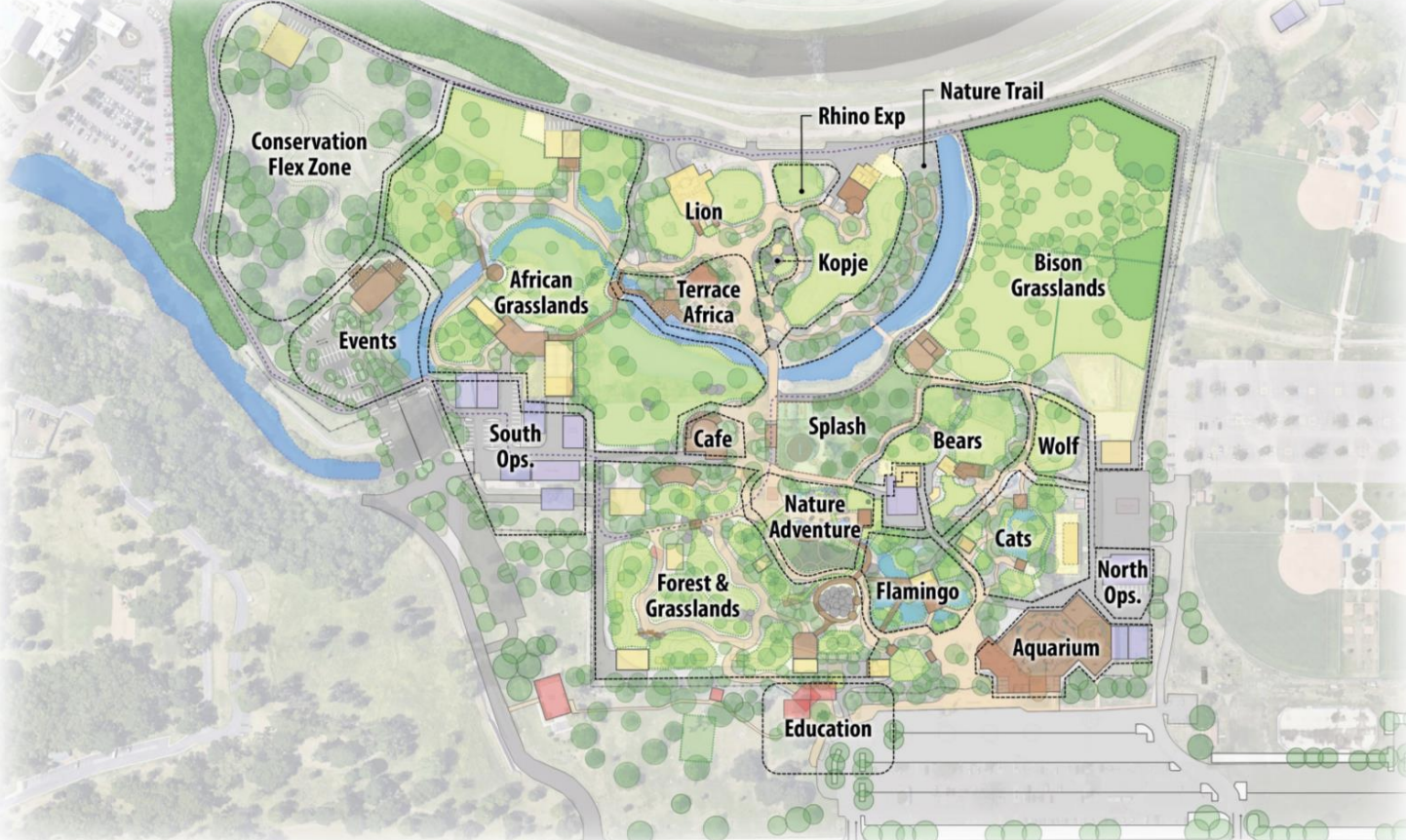
Aquarium and butterfly rainforest
Bringing the Butterfly House and Aquarium onto the zoo property is a top priority within the master plan.
- That includes reimagining how visitors enter and exit the zoo and locating the aquarium right out front in what was previously known as the Delbridge Museum – both so it's accessible and so folks don't have to walk far to see the indoor exhibits during the winter months.
The specific design has not been finalized, but there will be about 16,000 square feet of aquarium space – enough room for sharks and a tunnel system, Dewitz said – and another 9,000 square feet for an indoor butterfly rainforest.
Here are some renderings of what that could ultimately look like:
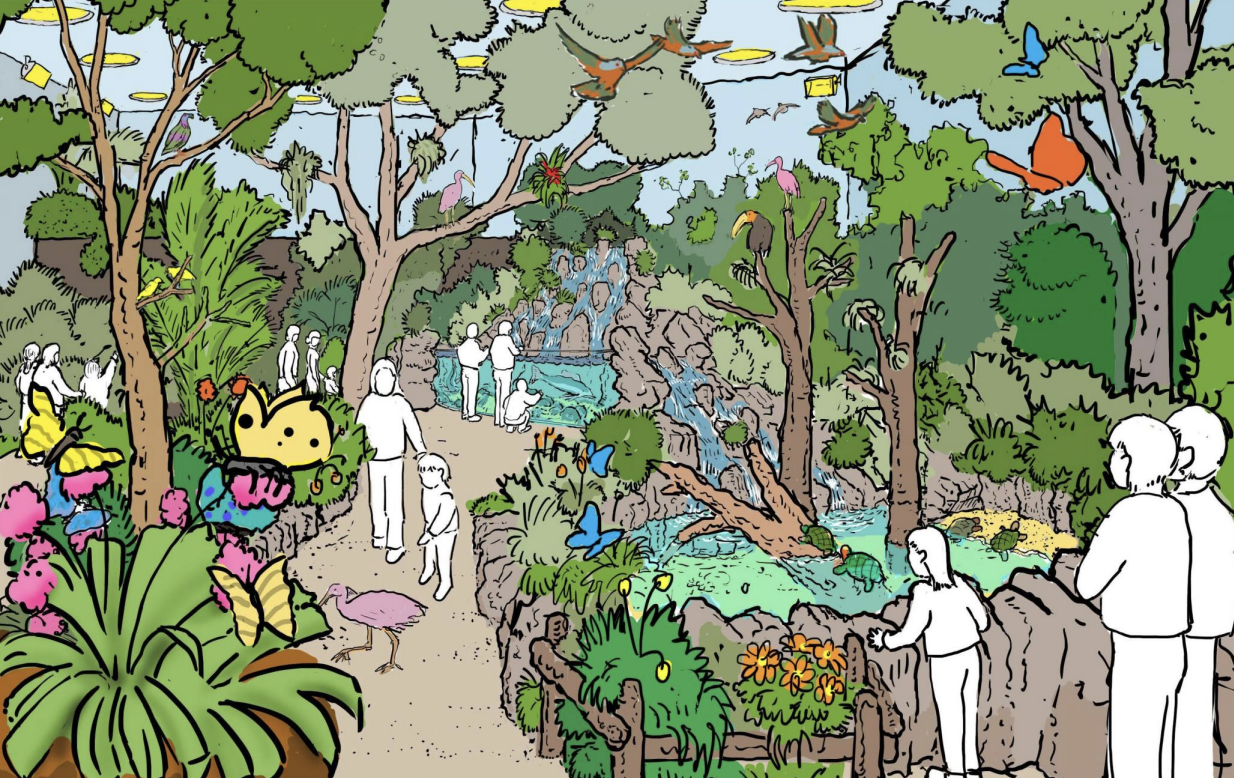
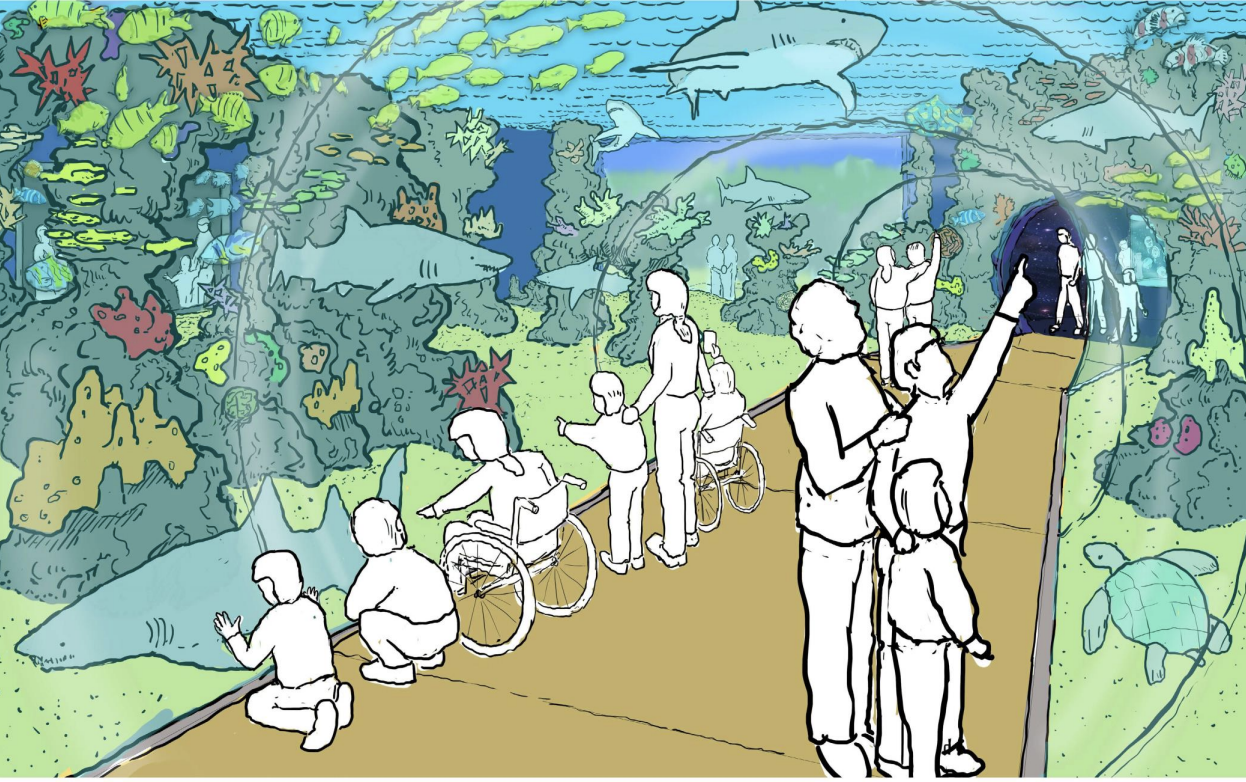
Education center
The master plan also includes a new education center that would inch into the neighboring Sherman Park. That'd also involve replacing the bathrooms at the park to be accessible year-round, Dewitz said.
- More space for education programs is needed, she added, because the current programming consistently fills up. The zoo saw 70,000 people participate in education programs last year.
In all the planning, the zoo has involved the city parks department and Director Don Kearney.
"You really have to have a road map of where you’re going and in order to keep the zoo fresh and an attraction and make it a tourism draw," Kearney said of the master plan.
Africa zone
Certainly the lion exhibit will bring big changes to this section of the zoo, but the master plan also details expanding the giraffe and African hoof-stock habitats, too.
- Right now, this section of the zoo has a dead end. The long-term goal would be to build in a loop where visitors can go all the way around the Africa exhibit, feed giraffes, and have an indoor arena for winter viewing.
- The master plan also includes a new cafe with a more boutique offering like ice cream, beer and a patio that lets visitors overlook the waterway and see the giraffes.
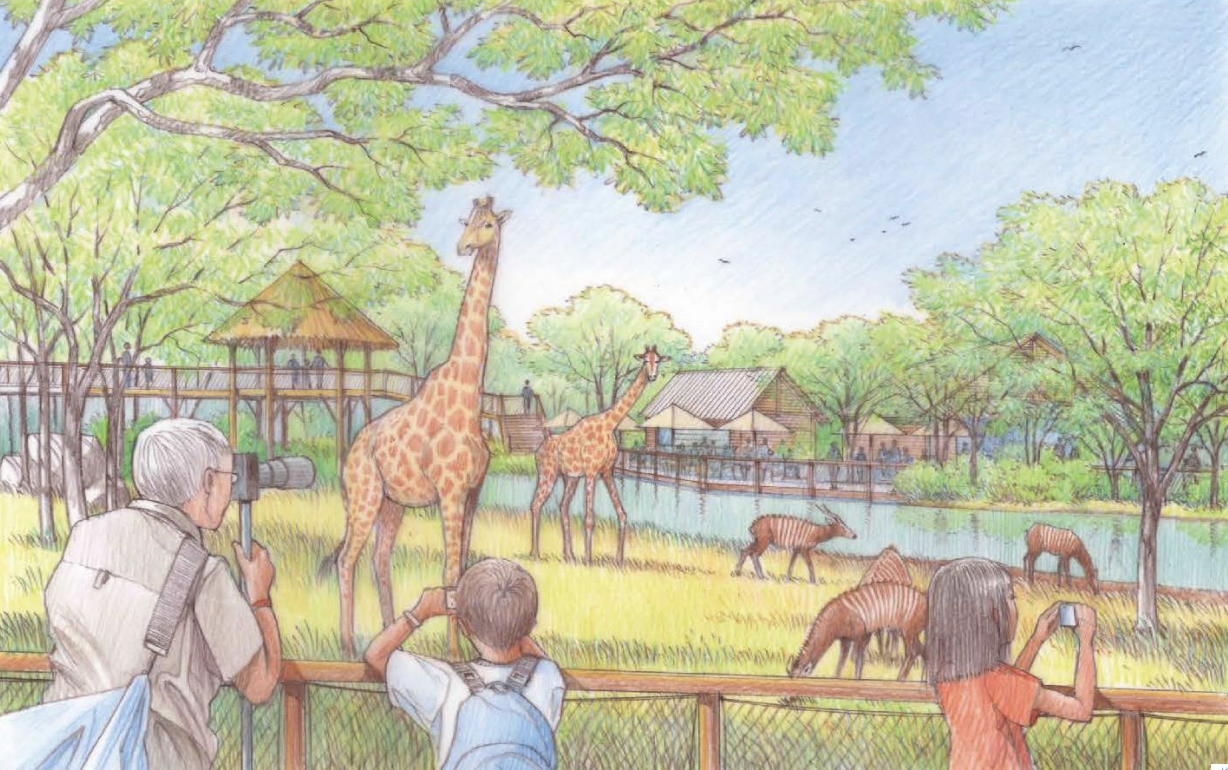
A nature trail would also run adjacent to the Africa zone with amenities like a ropes course and space to run overnight zoo camps.
Central zone
This is the area that'll see the least dramatic change in the master plan. If you've been to the zoo, picture essentially the bear exhibits, the big cats, the playground and the red wolves.
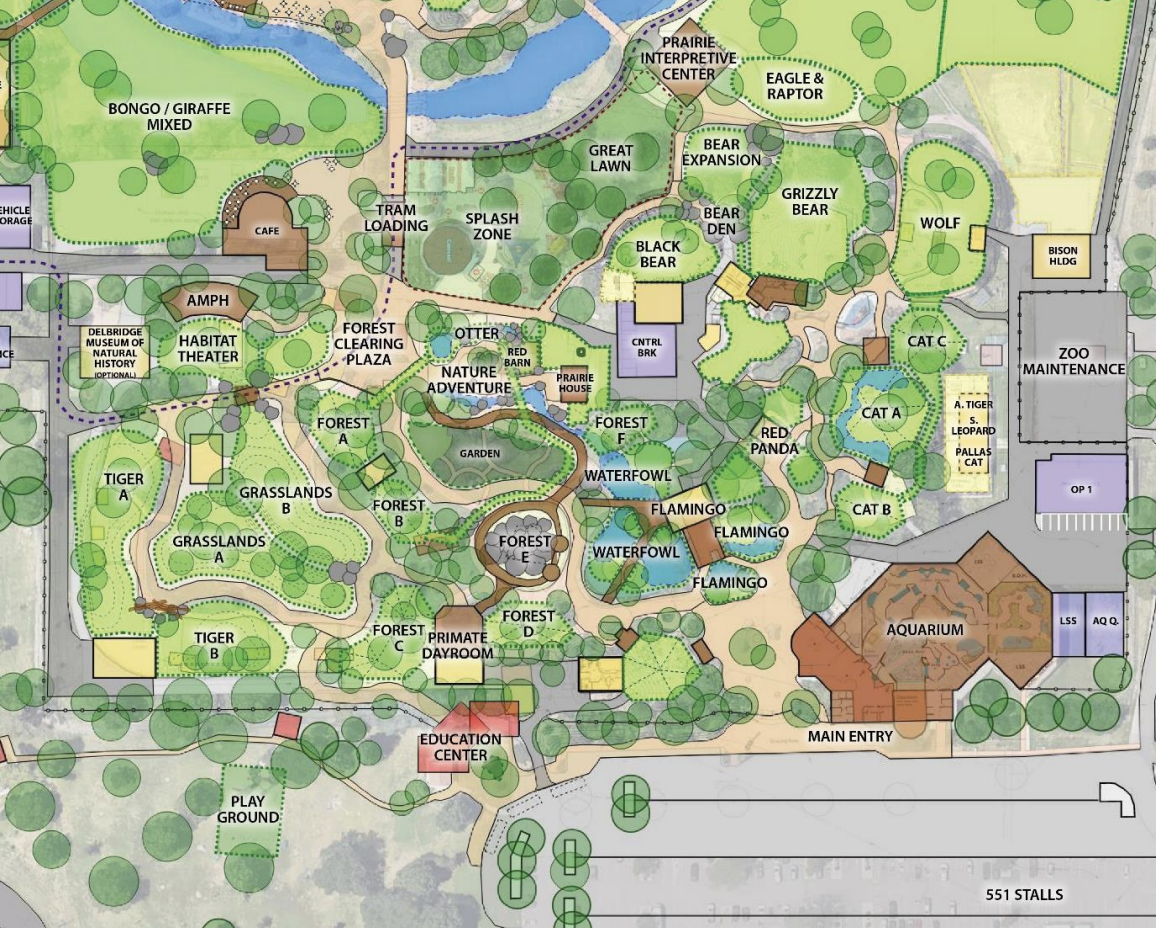
That said, there are still some big improvements planned, including:
- Remodeling the flamingo habitat,
- Giving the red pandas a new home,
- Adding river otters,
- and adding a nature adventure area that connects a path giving visitors a high-up view of the primates and other animals, as well as a play area for kids.
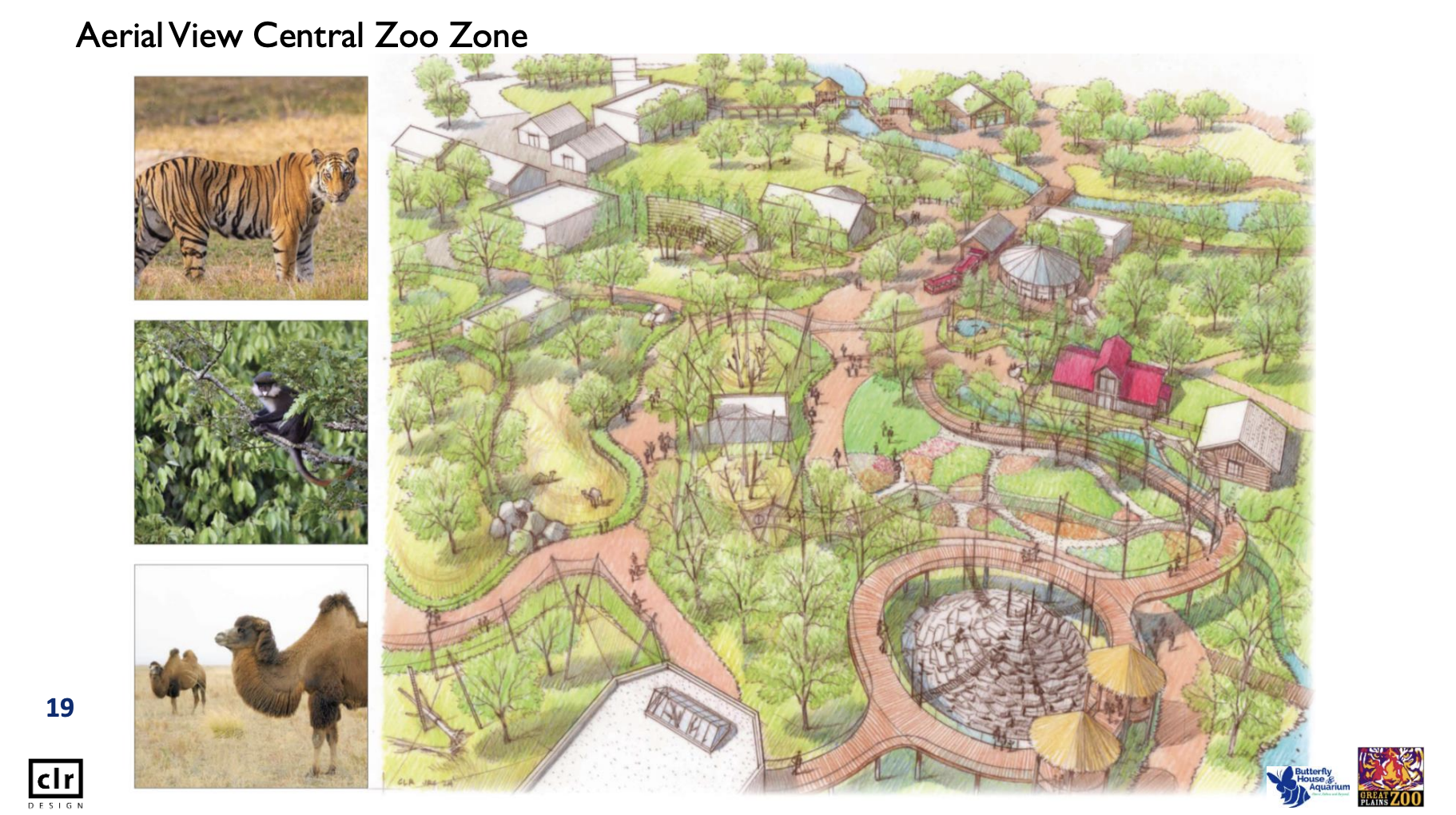
Forest and grasslands zone
This is the oldest area of the zoo, Dewitz said, adding that it "needs a lot of love."
The vision for this area is to create a new tiger habitat to free up more space for the cats in the existing big cat area.
This area will also include the option for a 4,000 square foot reimagined Delbridge Museum of Natural History.
- There will also be space where visitors can walk along an aerial canopy that'll connect to the nature adventure zone.
Conservation zone
The zoo would also begin to use more unused land near the back of the campus for conservation work.
- The idea is that it'd be a more quiet, private space to run programs like raptor rehabilitation, for example.
"You don't want those animals to become accustomed to humans," Dewitz said. "Our job is to help them heal and be able to go right back to the wild."
Event zone
Part of the master plan also includes giving the public more opportunities to host events at the zoo.
- A dedicated event area is a longer-term plan, and the idea of using events as another revenue stream is also an important part of the zoo's future business model, according to information presented to the City Council on Tuesday.
What happens next?
There are already a few big construction projects underway at the zoo.
- A new splash pad is expected to open up around Memorial Day weekend, and a new lion exhibit will open later in the summer.
As for the master plan, the Sioux Falls City Council will vote to approve the plan in the coming weeks, and then it'll be up to the zoo to start designing the first projects – primarily the new aquarium.
There's also a future rebrand – including a new name for the combined zoo, aquarium and butterfly house – to come as the master plan continues to unfold, Dewitz said.

